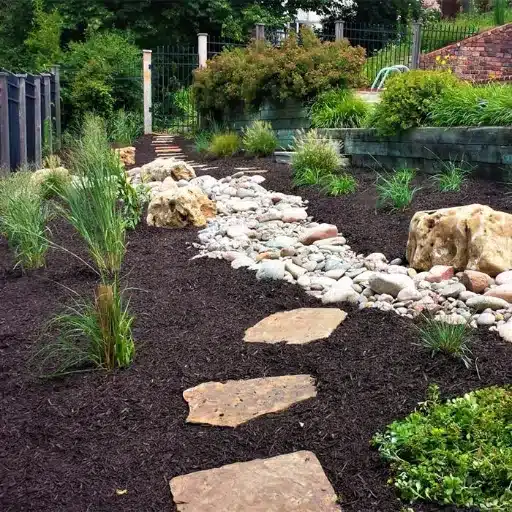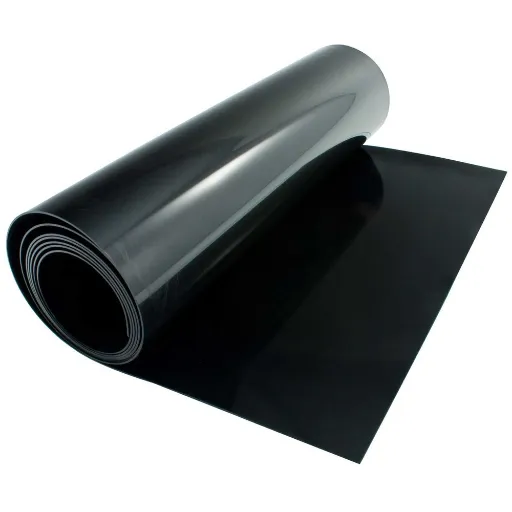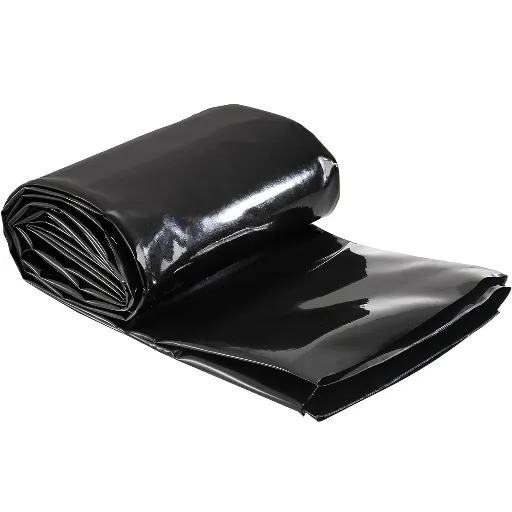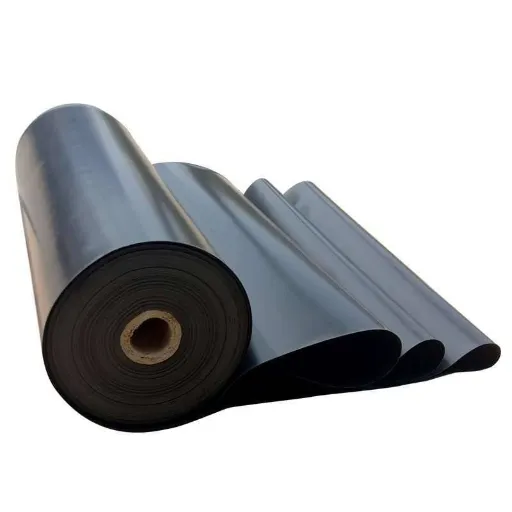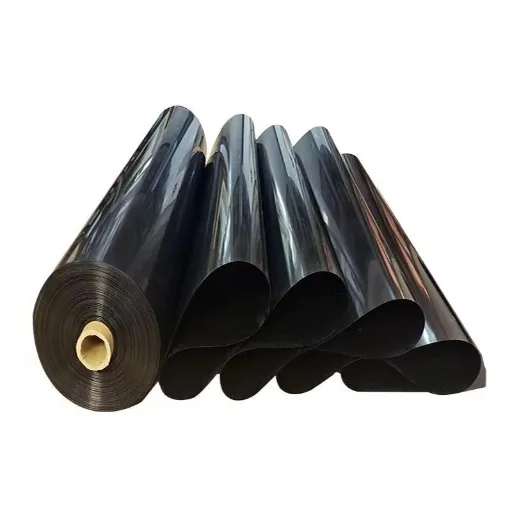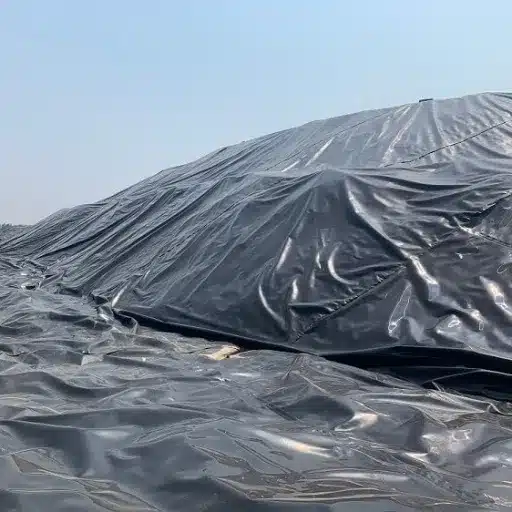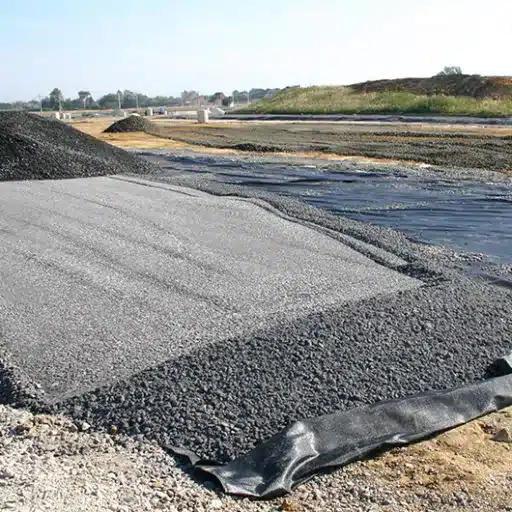Once weeds have entered your garden or yard, they immediately take hold and make maintenance distressingly difficult as if they were competing for nutrients, water, and sunlight with your plants. Either you have failed to keep these persistent interlopers away, or you must now look into an extreme, long-lasting solution called weed barrier fabric. This foundational landscaping component controls weed growth, conserves soil moisture, and enhances the beauty of your outdoor space. Here, we shall compare the best weed barrier fabrics, looking at their benefits, features, and the best choice for your particular need. So, regardless of whether you are a professional gardener or a DIY enthusiast about to embark on another landscaping project, this guide, with all the pertinent details, will keep your plants flourishing and void of weeds.
Importance of a Weed Barrier Fabric
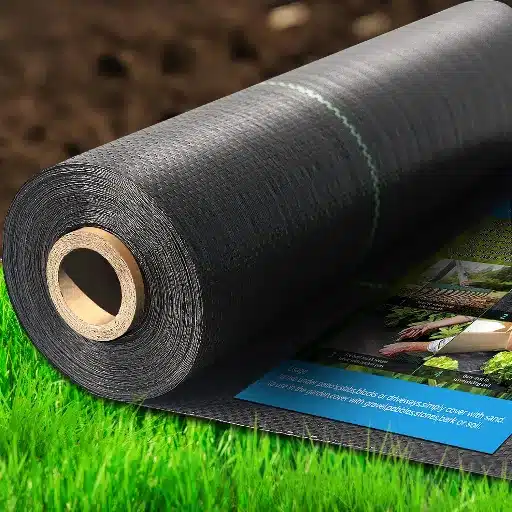
The weed barrier fabric has a tremendously important role in the process of modern gardening and landscaping. Acting as a treatment, the fabric minimizes weed growth by denying them sunlight while allowing water to pass through to the soil with nutrients. The end result is healthier flowers, plants, and vegetables that have to do with fewer weeds competing aggressively for resources.
🌱 Key Statistics:
- Gardens experience up to 90% decrease in weed growth
- Quality barrier fabrics last 5 to 10 years
- Modern fabrics include UV resistance for extended durability
While choosing weed barrier fabric, make sure to consider its material, permeability, and thickness to suit your needs. In that way, heavier-grade fabrics will be suitable for pathway and perennial beds, whereas light or woven ones can be used well in vegetable gardens, where water flow becomes crucial. Weed barrier fabric not only beautifies outdoor places but also conserves moisture in the soil, prevents erosion, and, lastly, embraces the greener way of gardening.
Overview of Landscape Weed Control
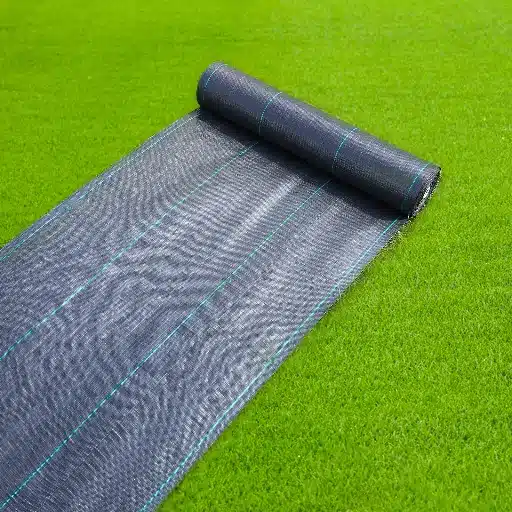
Implementing weed control renders both a pleasing and a healthy outdoor space. The threats and problems preventing weed proliferation can be kept at bay by employing a combination of preventive methods, modern techniques, and environmentally conscious practices. Current research shows weed causes up to 34% loss in crop yield worldwide, thus marking the relevance of not only weed management in commercial-based agriculture but residential, professional landscaping.
Modern Weed Control Methods
- Mulch and weed barrier fabrics: Prevent weed growth by limiting light and germination of seeds
- Organic mulch (wood chips/bark): Keep weeds at bay while improving soil and moisture retention
- Pre-emergent herbicides: Create chemical barriers under soil surface for larger areas
- Manual pulling: Precise removal using weed pullers and hoes for selective targeting
- Laser-based technologies: Automated precision removal without harming neighboring plants
Advantages and Disadvantages of Weed Barrier Fabric
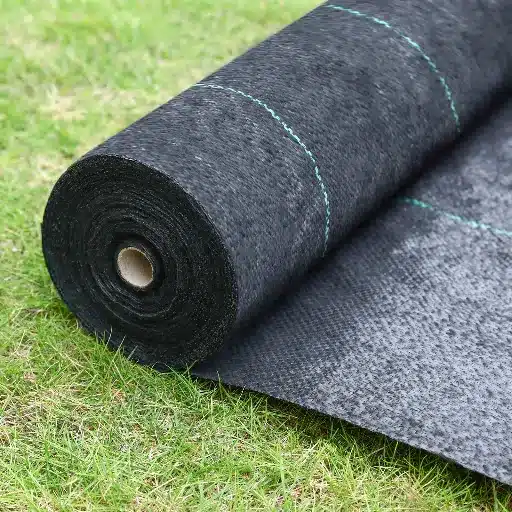
There are various benefits and drawbacks to weed barrier fabrics. My experience has taught me that they suppress weed growth and thus reduce maintenance work, saving time and effort. From the other side of things, I have noticed that they can increasingly limit the flow of water and nutrients into the soil, eventually adversely affecting the plants. Also, I consider these to be not permanent solutions; weeds can still sprout on top of the fabric as debris continues to accumulate.
Advantages of Using Weed Control Fabric
The weed control fabrics pose some advantages in gardening, landscaping, and farming. Below are the top advantages supported by data from recent research:
1
Effective Weed Suppression
Weed control fabrics provide a physical barrier that blocks sunlight from reaching the soil and so greatly limiting weed growth. The gardening experts state that the fabric installed properly can prevent up to 90% of weeds from growing and therefore allows plants to grow without any competition from the weeds for nutrients and water.
2
Increased Moisture Retention
The fabrics enhance moisture retention in the soil by reducing its evaporation. This is really important in dry land areas and during seasons of drought since studies show that in covered soil with weed fabrics, moisture retention is 25-30% more than in uncovered soil.
3
Improved Soil Temperature Regulation
Weed fabrics may alter soil temperatures by insulation against heating or frost due to which plant roots are maintained in an ideal environment. It has been shown by research that this can help improve the plant growing environment and increase crop yields.
4
Reduction in Chemical Usage
Weed control fabrics can reduce the usage of herbicides and chemical weed killers, paving the way for environmentally friendly gardening and limiting the use of harmful chemicals to an extent.
Potential Drawbacks to Keep in Mind
The use of weed control fabrics, though having several benefits, also presents a few drawbacks that gardeners must keep in mind when they decide to put them to use in their gardens.
⚠️ Restricted Soil Health
Over time, the use of weed fabrics may limit the natural exchange of nutrients, water, and air between the soil and the environment. This may lead to compacted soil and decrease in beneficial microorganism activity that affects plant growth. Studies suggest that prolonged use of such barriers could lead to attenuation of soil fertility.
⏰ Limited Effectiveness Over Time
Although barriers inhibit growth of weeds for some time when weeds could start growing through the small perforations or along the topside of the fabric if a layer of soil or debris is amassed on top. It has been seen from research that weed barriers should be renewed every 3 to 5 years to give best results, which implies an increase in maintenance expenses.
🌍 Environmental Concerns
Most weed fabrics are of synthetic nature, generally polypropylene, which does not decompose. If discarded incorrectly, these fabrics might elevate the concern of plastic disposal into the environment. Also, these fabrics might slowly erode into microplastic fragments that seep into the soil, posing a larger environmental hazard in the far future.
User Testimonials and Reviews
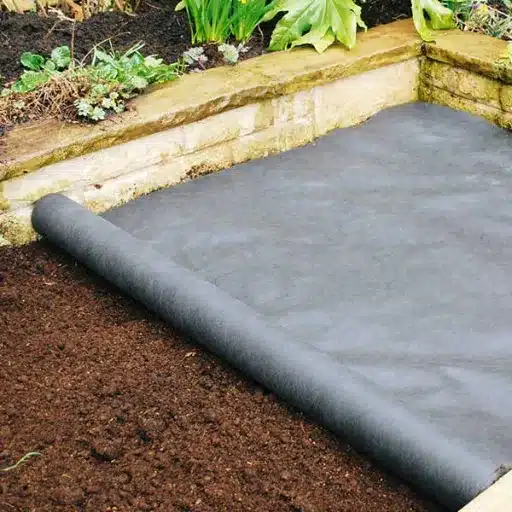
What Users Love About Eco-Friendly Options
Eco-friendly barrier weed fabrics have become popular with gardeners and landscapers for their sustainable nature and excellent performance. Users appreciate the fact that these options are usually made from biodegradable or recyclable materials, furthering environmental causes by curbing plastic waste and carbon footprints. Many environmentally friendly fabrics such as those made-from jute or coconut coir, or even burlap, can decompose naturally over time and enrich the soil as they degrade.
Users feel that another way these options are pleasing is that they may promote soil health better by allowing air and water through while effectively preventing weeds. More-so, biodegradable mats have been reported to show positive results for a longer time, going up to some degree with 95% in suppressing weed growth throughout their life span. This surely places the eco-friendly way as a viable option that supports the environment while being an effective and reliable choice for any gardener.
Common Complaints and Solutions
While the interest in eco gardening keeps growing, some have raised doubts about their feasibility and performance.
| Common Complaint | Solution |
|---|---|
| Higher Cost 20-50% more expensive than synthetic alternatives |
Biodegradable mats are cheaper in the long run when accounting for longevity and lower maintenance costs |
| Installation Difficulty Can lead to improper weed suppression |
Manufacturers provide thorough instruction manuals and video guides |
| Weather Sensitivity Heavy rains can accelerate decomposition |
Apply protective cover such as organic mulch to extend duration by 30% |
| Limited Availability Not widely distributed in some locations |
Online marketplaces now offer wide variety and broader reach |
Employing these solutions practiced in many cases, has fostered well from the adoption of fine green practices in confidence.
Expert Tips for Installation and Maintenance
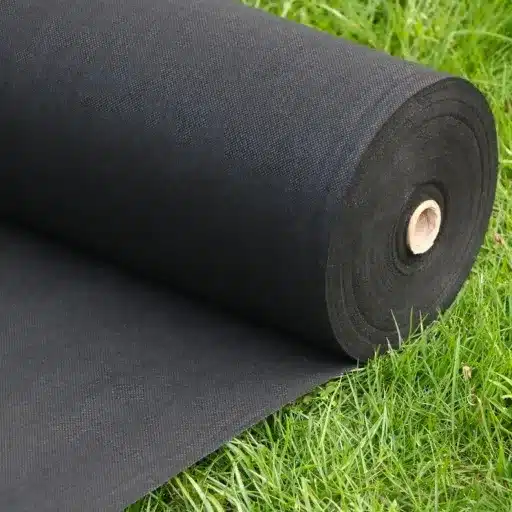
Maintenance Tips for Long-Term Care
For the long health and vitality of your garden, a constant bout of maintenance is required. Here are some useful tips according to the latest trends that will see you through for long-term success:
🧪 Regular Soil Testing
Healthy soil is the cardiologist of any kind of garden. It is wise to carry out soil tests every couple of years to keep track of nutrient levels, pH balance, and organic matter present in the soil. Studies by agriculturalists state that soils within the pH range of 6.0 to 7.0 are conducive for the growth of most plants.
💧 Watering Well
Poor watering puts pressure on the plant and encourages disease. Deep watering, rather infrequently, has been advocated by a study carried out through the University of California as it helps in building stronger rooting systems and avoids wastage of water. Employ drip irrigation or soaker hoses to keep evaporation low and water down to the roots.
✂️ Seasonal Pruning and Cleanup
Late winter or early spring pruning has the advantage of encouraging sturdy growth and the shaping of the plant. Cleaning deadwood and fallen debris seasonally helps in pest control. It is an expert opinion that sterilizing pruners after every use should be done to limit the spread of pathogens.
🔄 Rotating Crops for Soil Health
Crop rotations are known to maintain soil fertility, thereby breaking pest cycles. As proven, crop rotation on a yearly basis reduces soil-borne pathogens while balancing the usage of nutrients; e.g., following nitrogen-depleting crops such as tomatoes with nitrogen-fixing crops such as peas or beans.
How to Combine Fabric with Mulch to Gain Best Results
Landscape fabric in concert with mulch goes a long way toward weed control and moisture retention in gardens. This combination equally works against reduction in maintenance effort, contributing to healthy plants. The trick in doing it well lies in following each step in detail:
- Prepare the Area: Clear the area from weeds and debris of any kind. This sets the stage for good flatness of the fabric and support of uniform mulch on top.
- Place the Landscape Fabric: When the area is ready, now, measure and cut the landscape fabric according to the dimensions of the garden bed. Laser-like precision is paramount as one secures these to the soil with landscape staples, minimizing any wild exposure to weeds. For plants already in the ground, cut “X”s so the fabric will slip around its base.
- Choose the Right Mulch: You’re best off using organic mulches such as wood chips, shredded bark, or straw with fabric. These degrade over time, enriching the soil as they form a protective layer. A 2-3 inch layer of mulch is adequate for weed suppression and moisture retention.
- Put in the Mulch: The mulch is spread uniformly on the fabric, making certain it does not starve plant stems. Leave about 2 to 3 inches of space between the mulch and the base of each plant to avoid excessive moisture buildup leading to rot.
Reference Sources
-
Bob Vila – This article reviews and tests the best landscape fabrics, highlighting their durability and effectiveness in weed control. Source
-
The Spruce – A detailed guide on the best landscape fabrics, including the ECOgardener Garden Weed Barrier, with insights into their benefits and drawbacks. Source
-
Home Depot – Provides information on various weed control fabric options, their applications, and suitability for different landscaping needs. Source
Frequently Asked Questions (FAQs)
❓ What weed barrier fabric is best to be used to curb weed growth?
Light or heavy duty woven or otherwise non-woven landscape fabric is usually the best weed barrier fabric to curb weed growth. These fabrics block weeds but allow water and air to pass through for the health of your garden beds. Go for the very best in quality rated for durability and effectiveness, such as premium heavy duty weed barrier landscape fabric that ensures long-lasting weed control.
❓ How to choose the right landscape fabric for your garden beds?
When considering the right landscape fabric for your garden beds, some things to think about might relate to the fabric type and weight. Heavy duty options should be considered for long term installations. Then ensure that your fabric can block weed growth while allowing the penetration of water and air, which is one important factor for healthy plants.
❓ Can plastic sheeting be used as a weed barrier?
Plastic sheeting can keep weeds out for a while but is definitely not a solution for prolonged use in active garden beds. Unlike landscape fabric, plastic barriers do not allow water or air to seep down the root zone and therefore may actually cause plants to suffocate and drainage problems. Weed barrier landscape fabric is the better option for healthy growth.
❓ How does one set up a heavy duty weed barrier landscape fabric?
Firstly, you will need to clean the whole place from weeds and debris before installing heavy duty weed barrier landscape fabric. Measure and cut the fabric to the size of the area, and lay it down flat. Pins are nailed through the fabric so it will not shift. Finally, cover with mulch or compost to boost its efficiency against weeds.
❓ Which types of weeds can a weed barrier stop?
This line of weed barrier will prevent both annual and perennial weeds. Blocking sunlight and restricting access to soil is what a heavy-duty weed barrier fabric uses to contain the growth of weeds under it. This is of great help to flower beds and garden beds and even driveways, where weed control is a serious matter.
❓ Is there such a thing as environmental landscape fabric?
Sure, there are landscape solutions that are environmentally friendly, often being made from recycled materials or biodegradable materials. Ecogardener premium fabric, for instance, is said to have been developed with a bit of consideration for the environment itself. These fabrics work toward not only weed control but also a greener contrasting approach to gardening.
🌿 Ready to Transform Your Garden?
Choose the right weed barrier fabric for your landscaping needs and enjoy a maintenance-free, beautiful garden year-round.
“A well-chosen weed barrier fabric is an investment in your garden’s future – protecting your plants while preserving the environment.”

